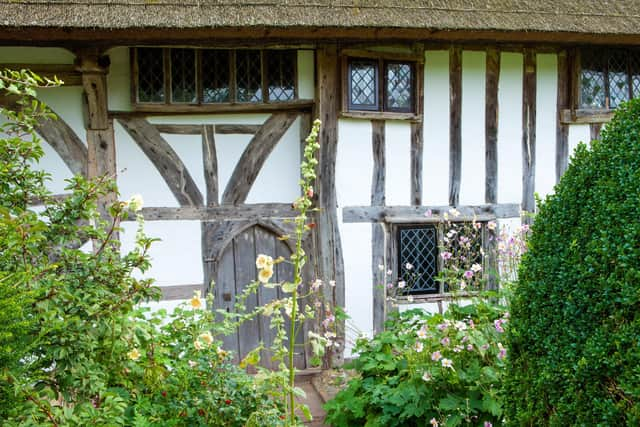National Trust celebrates 125 years since buying its first property – in Alfriston
and live on Freeview channel 276
The Clergy House is nestled alongside the River Cuckmere just outside Lullington and cost the National Trust just £10 to buy and a further £400 to repair.
It captivated Octavia Hill, one of the founders of the Trust, who wrote that she was moved by “the pleading voice of the old building itself... to be left to tell its story to the days that are to come.”
Advertisement
Hide AdAdvertisement
Hide AdIts purchase and restoration paved the way for the future of the Trust, which now cares for over 500 historic houses, castles, parks, and gardens and more than one million works of art.


National Trust curator George Roberts said, “The experience of conserving and finding a use for the Clergy House played an important role in the development of the newly-formed, little-known National Trust. Had its efforts to purchase and restore the house failed, the Trust may never have acquired another building.”
The house – at risk of collapse when the Trust purchased it – is a type of vernacular building known as a Wealden Hall House and dendrochronology (tree ring) testing in recent years has dated the house to 1399-1407.
Surviving examples of these houses are mainly concentrated in South-East England and they were high-status dwellings.
Advertisement
Hide AdAdvertisement
Hide AdMr Roberts said, “While Alfriston Clergy House may seem small, in its day the architecture would have been incredibly grand. The timbers and crown post in the hall are truly remarkable.
“Beautiful, natural and historic places matter. Our role is to care for them and ensure they look and feel amazing forever, so that they provide the most benefit to the most people.”
At the heart of the building is the hall, where residents and guests were entertained.
Carved doorways and evidence of red ochre paint suggest the owner’s wealth and significance.
Advertisement
Hide AdAdvertisement
Hide AdOne fascinating feature is a beautiful wooden carving of an oakleaf that survived from when the house was built.
The National Trust’s operations manager for Alfriston Clergy House Holly Jones said, “The oakleaf sits in the north-east corner of the room. People often think it is the inspiration for the National Trust’s logo, but in fact that was designed by Joseph Armitage in 1936, who won an open competition. Nonetheless, Alfriston Clergy House couldn’t be more symbolic of the National Trust’s foundation and early history.”
The house was used as a residence for Alfriston’s parish priest until the early 18th century and remained in church ownership until it was sold to the National Trust in 1896.
The house has underwent several alterations to modernise it as styles and tastes changed.
Advertisement
Hide AdAdvertisement
Hide AdAfter the Reformation, when vicars were permitted to marry, work took place to enlarge the house to accommodate more people.
Church records show that the vicar Hugh Walker, appointed in 1593, had at least seven children living in the house with him and his wife.
By the 1700s, the Clergy House had been subdivided into two cottages that could be rented out, with the vicars living elsewhere, often in another parish.
Despite this, it was still officially the vicarage until the 1850s, when a new house was purchased for the vicar to live in.
Advertisement
Hide AdAdvertisement
Hide AdIn later years, the house attracted figures in the art world, including Arts and Craft architect and designer, Charles Ashbee, who honeymooned there with wife Janet in 1898.
The house’s links to the art world continued when it was taken on by Charles Aitken, director of the Tate Gallery in London, and Sir Robert Witt, a well-known art collector and one of the founders of the Courtauld Institute in London.
Operations manager for the house Holly Jones said, “Today, 125 years later, the atmosphere when you stand beneath these beams is palpable.
“It has the same power to move and inspire, as it did with Octavia Hill years ago. Our founder knew she had to rescue it and open it to the public.
Advertisement
Hide AdAdvertisement
Hide Ad“We’re proud to continue her vision in caring for this fine house. We want Alfriston Clergy House to be loved, explored and enjoyed by as many people as possible.
“We can’t wait for lockdown to end and to open our doors once again.”